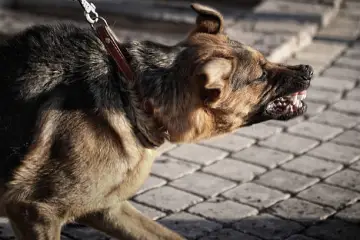Rear-end collisions are common car accidents resulting in significant property damage, injuries, and even fatalities. Determining liability in rear-end collision cases is the top priority for ensuring that the responsible party is held accountable for their actions and that the victims receive proper compensation for their damages.
In this article, we will look closer at the key factors in proving liability in rear-end collision cases, including negligence, the role of evidence, and the importance of legal representation when pursuing a legal claim.
Contents
Understanding Negligence in Rear-End Collisions
In rear-end collision cases, establishing negligence is central to proving liability. In the literal sense, negligence refers to the failure to exercise reasonable care, resulting in injuries or harm to another individual. To establish negligence in a rear-end collision, the following elements must be shown:
- Duty of Care: The driver must operate their vehicle safely and by traffic laws. This duty of care includes maintaining a safe distance, obeying speed limits, and remaining attentive to the road.
- Breach of Duty: The driver must have breached their duty of care. In the context of rear-end collisions, this often involves following too closely (tailgating), distracted driving, speeding, or failing to stop to avoid a collision.
- Causation: The breach of duty must directly cause the accident and resulting damages. In rear-end collisions, it is generally clear that the rear driver’s negligence caused the accident, as they failed to maintain a safe distance or react in time.
- Damages: The victim must have sustained actual damages, such as physical injuries, property damage, medical expenses, or lost wages, due to the rear-end collision.
Importance of Legal Representation
Navigating the legal process of proving liability in rear-end collision cases can be complex and overwhelming, particularly when dealing with insurance companies and legal procedures. Luckily, a Whitley Law car accident attorney can assist with your claim regarding proving liability in a rear-end collision.
Seeking the help of a seasoned car accident attorney is essential for several reasons:
- Legal knowledge and expertise: An attorney specializing in car accident cases understands the laws, regulations, and precedents relevant to rear-end collisions. They can guide the legal process, gather necessary evidence, and build a strong case on behalf of the victim.
- Negotiation skills: Insurance companies often attempt to minimize settlements or shift blame onto the victim. A skilled attorney can negotiate with insurance adjusters, ensuring that the victim’s rights are protected, and they receive fair compensation for their damages.
- Courtroom representation: If a fair settlement cannot be reached through negotiation, an attorney can represent the victim in court. They will present the evidence, cross-examine witnesses, and argue the case on behalf of the victim to seek a favorable verdict.
- Access to resources: Attorneys have access to resources such as accident reconstruction experts, investigators, and medical professionals who can provide additional support in building a strong case.
Role of Evidence in Proving Liability
Evidence plays a key role in proving liability in rear-end collision cases. The following types of evidence can help establish the negligence of the rear driver:
- Police report: A police report filed at the accident scene can provide valuable information, including observations of the responding officer, statements from involved parties and witnesses, and an assessment of the accident scene.
- Eyewitness testimony: Statements from witnesses who observed the accident can provide crucial details about the sequence of events, the driver’s behavior, and any other relevant information supporting the victim’s claim.
- Video footage: If available, video footage from traffic cameras, surveillance cameras, or dashcams can provide clear evidence of the accident and help establish liability. This can include footage from nearby businesses, intersections, or traffic monitoring systems.
- Photos of the accident scene: Taking photographs of the accident scene, vehicle damage, skid marks, and road conditions can provide visual evidence that supports the victim’s claim.
- Medical records: Medical records documenting the injuries sustained by the victim can establish the extent of damages and their connection to the rear-end collision. This can include diagnostic tests, treatment plans, and prognosis.
- Expert testimony: Expert testimony may be necessary in tricky cases or cases with disputed liability. Accident reconstruction experts can analyze the evidence, examine the vehicles involved, and provide an expert opinion on how the accident occurred and who is at fault.
Move Forward With Your Claim!
Proving liability in rear-end collision cases requires establishing negligence, gathering compelling evidence, and navigating the legal process effectively. By understanding the elements of negligence, collecting relevant evidence, and seeking the assistance of an experienced car accident attorney, victims can maximize their chances of proving liability and obtaining fair compensation for their damages.
If you have been involved in a rear-end collision, consulting with a skilled lawyer who can walk you through the legal process and fight for your rights is best. Proving liability is the most important thing to do when filing a claim.






